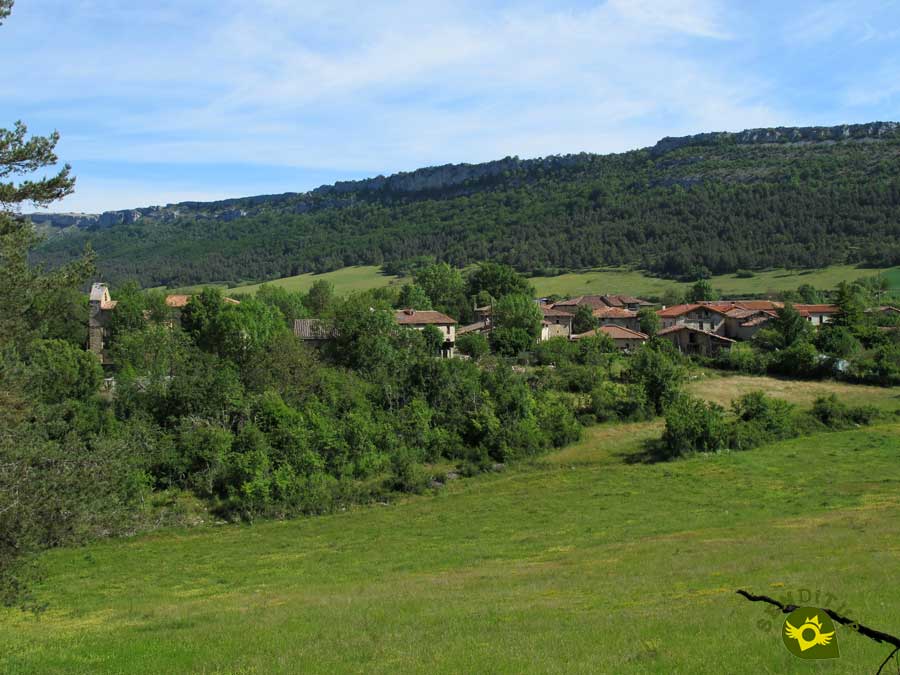It is a place of the council of Valderejo, belonging to the municipality of Valdegovía in the Cuadrilla Alavesa de Añana. Lalastra is located on the left bank of the Purón River, halfway up the hillside, in the high Valderejo Valley. The first human settlements in the area date back to the Neolithic period. Prehistoric tumuli, places of worship, prehistoric burials of primitive communities of shepherds, tell us of the good grazing lands of Lalastra and the valley where it is located. Along with Ribera, Villamardones and Lahoz, Lalastra received the fuero de Valderexo granted by King Alfonso X in 1273. In 1800 it was under the jurisdiction of the diocese of Burgos and belonged to the vicariate and archpriesthood of Valdegovía. Lalastra was the capital of the municipality that formed together with the other rural nuclei of the Natural Park of Valderejo, but the later abandonment of some towns, like Villamardones and Ribera, caused the inclusion of Valderejo in the municipality of Valdegovía, to which today it belongs.

The small and coquettish town of Lalastra lets us admire the curious treasures it holds from earlier times. Its history, traditions and customs are evident in them. The fountain and watering hole in the square, where animals still quench their thirst today, together with the washing place on the outskirts of the village, were built in 1954. In the Ethnographic Museum, which occupies the building of the old town hall of Valderejo, we can recreate and broaden our knowledge about the traditional and rural uses and ways of the people who once lived in this beautiful valley. The church of Santa Elena, which preserves the original Romanesque façade, was enlarged in the 16th century and houses a Renaissance sepulchre. In the tower of the church a clock that was installed on April 25, 1859 and whose cost was 2000 pines, with a single needle, as time was marked at touch of the bell, today and after having been repaired in 1994 joins and accompanies life in Lalastra. The most curious can admire its machinery going up to the bell tower. In the same environment we can see a colt of horseshoe, in it was placed to the ox that, tied with girths around the belly and others to tie the horns to the yoke, was hoisted in volandas so, well subject, to be able to place the spoiled horseshoe.

If we are going to enjoy the Natural Park of Valderejo and its attractive hiking trails, what better than to go first to the Park House which is built on the old school of Lalastra. In it they will give us all the necessary information to be able to cross and to enjoy so privileged place. Trails such as that of the gorge of the Purón River, the Portilla path, that of San Lorenzo, that of Santa Ana... and even a didactic itinerary, surrounded by a beautiful landscape, also bring us closer, depending on the season, to see the golden eagle, the alimoche, or the real protagonist of the park, the griffon vulture. While in its woods we may be lucky enough to meet an elusive bobcat.

Lalastra celebrates festivities in September. On the first Saturday of June, together with the neighbours of other villages in the area, Lalastra celebrates a pilgrimage to the Sanctuary of the Virgen de Angosto and on 10 August the pilgrimage is to the hermitage of San Lorenzo, patron saint of Valderejo.
In front of the portico of the church is the bowling alley. In each village or meeting place of the valley pastors there was one. It was the place of recreation and competition where the skills in this game were demonstrated. Two different modalities were practiced, the Calva, in which the miko or miki, a single bolus, had to be knocked down, and the Losino Nine, in which the boluses to be thrown are nine. Nowadays, and remembering this tradition, a bowling championship is held on August 10, the day of San Lorenzo.
In Lalastra, on August 10 and on the occasion of the celebration of the pilgrimage of San Lorenzo, we can see how the, until not long ago communal treasure in almost all villages, bread oven.

Legend has it that after a flood occurred in 1089, a shepherd found, in a narrow, an image of the Virgin floating in the water. Such has been the devotion of the people of the place for this Virgin that a sanctuary was built to which today still come, "parents, grandparents, children and grandchildren rumbosos and festive, as the sign announcing the pilgrimage reads, to celebrate with the Mother and Patron Virgin of Angosto.
MORE ROUTES AVAILABLE, DON'T MISS IT...
MORE PLACES AVAILABLE, DON'T MISS IT...
The A-4338 leads from San Zadornil to Lalastra and Lahoz. In a car park at the entrance to the village we must leave the vehicle as it is forbidden to park anywhere else in the town.
On weekends and public holidays, a bus company operates two daily services between Vitoria-Gasteiz and Lalastra. Also during the week Lalastra has a bus service on demand.
SENDITUR is not responsible for any variation in the information described, as well as for the misuse of its guides and recommends that everyone be responsible and prudent in carrying out the activity. Likewise, we invite you to document yourself with books and specialized guides to complement the information described. From the commitment of SENDITUR with Nature and the respect to the balance of the environment, SENDITUR urges you to travel in a responsible way, with low environmental impact and respecting at all times the Natural, Cultural and Social environment wherever you go. For any suggestion, SENDITUR invites you to send an email to .
Continue watching …